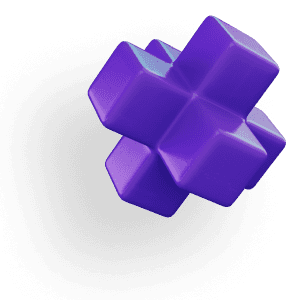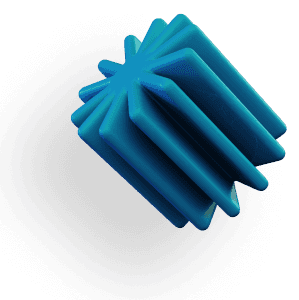Instant Connection for Pixel Streaming
— New Feature Automated Setup





Complete Guide for Digital Artists
Complete Guide for Digital Artists
Complete Guide for Digital Artists
Published on September 29, 2022
Updated on February 6, 2023
Table of Contents
Do you find yourself wanting to take a dip into the waters of digital art but don’t know how to get started? Or perhaps you’ve already been a digital artist for a while and you want to read up on the current state of the industry?
In this article, we’ve attempted to capture all the important aspects and concepts that just about anyone needs to know in order to be a successful digital artist. Whether you’re a beginner struggling with the sheer amount of information available out there, a grizzled veteran looking for a good read, or somewhere in between, this guide just might be exactly what you need.

Photo by Grovemade on Unsplash
Applications for Digital Artists
When looking into the different types of software available out there for digital artists, it can get understandably overwhelming. The key is first pinpointing what kind of art you’re interested in creating and then narrowing down your searches from there. Generally, applications will be divided into 2D programs, 3D programs, and animation software.
2D programs such as Adobe Photoshop and Clip Studio Paint are ideal for digital painting, drawing, and illustration. 3D programs are best for digital modeling or sculpting - Blender, SketchUp, ZBrush, and similar programs are best for these. Lastly, all animated works and even the motion graphics you see in video intros and transitions were also made by digital artists. Adobe After Effects, Maya, and Cinema 4D are just a few examples of applications that were made for these.
Desktop Computers for Digital Artists
When deciding on the type of desktop machine to use for digital artwork, consider both the specs of the computer itself as well as the hardware peripheries you’ll be working with. You’ll have to consider things such as:
Monitor - What size and aspect ratio suits you best? Which monitors are best for color grading?
Graphics and Processing Power - How high-end do your CPU and GPU have to be?
Memory - How many simultaneous apps and layers are you planning on running and how much much RAM will you need for them?
Peripherals - Do you need a graphic tablet for your art? If so, how large should it be?
Notebooks for Digital Artists
The main advantage of having a laptop versus a dedicated desktop computer is its portability and subsequent versatility. The main drawback, however, is its lack of customizability.
As such, you might need to be more aware of the specs of your portable machine before deciding to invest in it:
Operating System - Are you a Mac user or do you prefer Windows? Which OS can best handle the software you use for digital art?
Storage - If you’re working with huge files, how much storage is enough especially with the more limited storage available for notebook computers?
Graphics and Processing Power - Notebooks inherently come with less processing power than laptops. How much do you need to efficiently use your machine?
Peripherals - If your aim is maximum portability, maybe you could consider more compact drawing tablets, keyboards, and mice.

Photo by Kelly Sikkema on Unsplash
After deciding on what you will move forward with -whether it is a laptop, notebook, or computer-, it is always good to check out some of the other tools that might be helpful in your digital art journey.
Tutorials for Digital Artists
When you have a specific issue you want to learn about or a specific skill you want to acquire, nothing beats short-form tutorials online. Youtube is a great resource for this, but don’t sell other social media shortly. There are tons of great art accounts on Instagram, Twitter, and Tiktok that showcase quick tips for specific use cases. You might even learn something you didn’t know you needed.
Online tutorials are best for those that are more independent in their art education and prefer learning and practicing at their own pace. Lots of free videos and literature are available online but there are plenty of book resources that might help if you know where to look.
Courses for Digital Artists
If you want something a bit more holistic and structured, full courses are available for digital artists.
If you have the budget and the time, enrolling in digital art schools and working on getting art degrees could be a big help. You’ll have a whole network of teachers and fellow students as well as a structured curriculum that could help you grow as an artist. Physical art schools are great for this but online courses and classes work just as well.

Top Professions for Digital Artists
Just as “digital art” works as an umbrella term for a wide array of different practices, there are just as many job opportunities available for digital artists depending on their specialty. Graphic artists can work as illustrators or concept designers for various clients and agencies. There is also a fairly high demand for creative art directors, graphic designers, and illustrators in advertising and marketing. The tech industry is constantly looking for outstanding talent in UI/UX design. Not to mention the need for brilliant concept designers, animators, 3D modelers, or even NFT creators in the entertainment industry.
Career Tips for Digital Artists
If you’re looking to work full-time as a digital artist, take the time to look into the current state of the digital art industry. After all, it is important to know where to invest your efforts in order to manage your time wisely. Here’s some information that you might want to do some research on.
Average Salaries for Digital Artists
Depending on what kind of art they specialize in, digital artists in the US are reported to earn a salary ranging from $56,600 to $77,300, with a median average of $66,400. Values will vary across disciplines though, as well as location, and economic climate. Always make sure to do your research to find out a salary point that fits your specific skill set and experience.
Where to Find Jobs for Digital Artists
There are numerous ways for digital artists to find jobs and subsequently apply for them. Nowadays, most freelancing artists opt for online freelancing platforms such as Fiverr or Upwork. Social media platforms like Instagram, Twitter, and even Tiktok are amazing tools for digital artists. They’re great ways to showcase your work to the public for possible freelance gigs or commissions. And if you’re looking for more regular, full-time work, plenty of companies are always looking to hire digital artists for a wide variety of creative work.
Communities for Digital Artists
If you’re looking for some digital communities that share the same interest in digital art as you do, you’ll find that it’s quite easy to find your tribe online with digital art websites such as Pinterest, Ello, DeviantArt, and Tumblr. Even more mainstream social platforms such as Twitter and Reddit can be great places to find like-minded digital artists.

Photo by Brooke Cagle on Unsplash
Conclusion
Diving headfirst into the world of digital art can be daunting. Even those of us who’ve been in the industry for a while can get overwhelmed sometimes. But few careers available out there can be quite as satisfying or fulfilling as being a digital artist. So don’t be afraid to put yourself out there, and hopefully, with the help of our tips and tricks, you’ll find you can make a great career out of doing what you love.
Do you find yourself wanting to take a dip into the waters of digital art but don’t know how to get started? Or perhaps you’ve already been a digital artist for a while and you want to read up on the current state of the industry?
In this article, we’ve attempted to capture all the important aspects and concepts that just about anyone needs to know in order to be a successful digital artist. Whether you’re a beginner struggling with the sheer amount of information available out there, a grizzled veteran looking for a good read, or somewhere in between, this guide just might be exactly what you need.

Photo by Grovemade on Unsplash
Applications for Digital Artists
When looking into the different types of software available out there for digital artists, it can get understandably overwhelming. The key is first pinpointing what kind of art you’re interested in creating and then narrowing down your searches from there. Generally, applications will be divided into 2D programs, 3D programs, and animation software.
2D programs such as Adobe Photoshop and Clip Studio Paint are ideal for digital painting, drawing, and illustration. 3D programs are best for digital modeling or sculpting - Blender, SketchUp, ZBrush, and similar programs are best for these. Lastly, all animated works and even the motion graphics you see in video intros and transitions were also made by digital artists. Adobe After Effects, Maya, and Cinema 4D are just a few examples of applications that were made for these.
Desktop Computers for Digital Artists
When deciding on the type of desktop machine to use for digital artwork, consider both the specs of the computer itself as well as the hardware peripheries you’ll be working with. You’ll have to consider things such as:
Monitor - What size and aspect ratio suits you best? Which monitors are best for color grading?
Graphics and Processing Power - How high-end do your CPU and GPU have to be?
Memory - How many simultaneous apps and layers are you planning on running and how much much RAM will you need for them?
Peripherals - Do you need a graphic tablet for your art? If so, how large should it be?
Notebooks for Digital Artists
The main advantage of having a laptop versus a dedicated desktop computer is its portability and subsequent versatility. The main drawback, however, is its lack of customizability.
As such, you might need to be more aware of the specs of your portable machine before deciding to invest in it:
Operating System - Are you a Mac user or do you prefer Windows? Which OS can best handle the software you use for digital art?
Storage - If you’re working with huge files, how much storage is enough especially with the more limited storage available for notebook computers?
Graphics and Processing Power - Notebooks inherently come with less processing power than laptops. How much do you need to efficiently use your machine?
Peripherals - If your aim is maximum portability, maybe you could consider more compact drawing tablets, keyboards, and mice.

Photo by Kelly Sikkema on Unsplash
After deciding on what you will move forward with -whether it is a laptop, notebook, or computer-, it is always good to check out some of the other tools that might be helpful in your digital art journey.
Tutorials for Digital Artists
When you have a specific issue you want to learn about or a specific skill you want to acquire, nothing beats short-form tutorials online. Youtube is a great resource for this, but don’t sell other social media shortly. There are tons of great art accounts on Instagram, Twitter, and Tiktok that showcase quick tips for specific use cases. You might even learn something you didn’t know you needed.
Online tutorials are best for those that are more independent in their art education and prefer learning and practicing at their own pace. Lots of free videos and literature are available online but there are plenty of book resources that might help if you know where to look.
Courses for Digital Artists
If you want something a bit more holistic and structured, full courses are available for digital artists.
If you have the budget and the time, enrolling in digital art schools and working on getting art degrees could be a big help. You’ll have a whole network of teachers and fellow students as well as a structured curriculum that could help you grow as an artist. Physical art schools are great for this but online courses and classes work just as well.

Top Professions for Digital Artists
Just as “digital art” works as an umbrella term for a wide array of different practices, there are just as many job opportunities available for digital artists depending on their specialty. Graphic artists can work as illustrators or concept designers for various clients and agencies. There is also a fairly high demand for creative art directors, graphic designers, and illustrators in advertising and marketing. The tech industry is constantly looking for outstanding talent in UI/UX design. Not to mention the need for brilliant concept designers, animators, 3D modelers, or even NFT creators in the entertainment industry.
Career Tips for Digital Artists
If you’re looking to work full-time as a digital artist, take the time to look into the current state of the digital art industry. After all, it is important to know where to invest your efforts in order to manage your time wisely. Here’s some information that you might want to do some research on.
Average Salaries for Digital Artists
Depending on what kind of art they specialize in, digital artists in the US are reported to earn a salary ranging from $56,600 to $77,300, with a median average of $66,400. Values will vary across disciplines though, as well as location, and economic climate. Always make sure to do your research to find out a salary point that fits your specific skill set and experience.
Where to Find Jobs for Digital Artists
There are numerous ways for digital artists to find jobs and subsequently apply for them. Nowadays, most freelancing artists opt for online freelancing platforms such as Fiverr or Upwork. Social media platforms like Instagram, Twitter, and even Tiktok are amazing tools for digital artists. They’re great ways to showcase your work to the public for possible freelance gigs or commissions. And if you’re looking for more regular, full-time work, plenty of companies are always looking to hire digital artists for a wide variety of creative work.
Communities for Digital Artists
If you’re looking for some digital communities that share the same interest in digital art as you do, you’ll find that it’s quite easy to find your tribe online with digital art websites such as Pinterest, Ello, DeviantArt, and Tumblr. Even more mainstream social platforms such as Twitter and Reddit can be great places to find like-minded digital artists.

Photo by Brooke Cagle on Unsplash
Conclusion
Diving headfirst into the world of digital art can be daunting. Even those of us who’ve been in the industry for a while can get overwhelmed sometimes. But few careers available out there can be quite as satisfying or fulfilling as being a digital artist. So don’t be afraid to put yourself out there, and hopefully, with the help of our tips and tricks, you’ll find you can make a great career out of doing what you love.
Get Beyond Your Computer Performance
Run applications on your cloud computer with the latest generation hardware. No more crashes or lags.

Trial includes 1 hour usage + 7 days of storage.
Get Beyond Your Computer Performance
Run applications on your cloud computer with the latest generation hardware. No more crashes or lags.

Trial includes 1 hour usage + 7 days of storage.
Get Beyond Your Computer Performance
Run applications on your cloud computer with the latest generation hardware. No more crashes or lags.

Trial includes 1 hour usage + 7 days of storage.
Get Beyond Your Computer Performance
Run applications on your cloud computer with the latest generation hardware. No more crashes or lags.

Trial includes 1 hour usage + 7 days of storage.
Get Beyond Your Computer Performance
Run applications on your cloud computer with the latest generation hardware. No more crashes or lags.

Trial includes 1 hour usage + 7 days of storage.

Ready to focus on your creativity?
Vagon gives you the ability to create & render projects, collaborate, and stream applications with the power of the best hardware.

Vagon Blog
Run heavy applications on any device with
your personal computer on the cloud.
San Francisco, California
Solutions
Vagon Teams
Vagon Streams
Use Cases
Resources
Vagon Blog
How To Run Unreal Engine on a Low-End Device (Even Without GPU)
How To Run Unity 3D On Low-End Laptop (Even Without GPU)
Best Digital Twin Platforms & Software in 2025
How To Run Cinema 4D On Cloud
The Best PC Build For Unity
Picking The Best GPU For Unreal Engine
DJI Terra vs. Agisoft Metashape: Which One Should You Choose?
How To Run SketchUp On Cloud
How To Use Revit On Cloud Computer
Vagon Blog
Run heavy applications on any device with
your personal computer on the cloud.
San Francisco, California
Solutions
Vagon Teams
Vagon Streams
Use Cases
Resources
Vagon Blog
How To Run Unreal Engine on a Low-End Device (Even Without GPU)
How To Run Unity 3D On Low-End Laptop (Even Without GPU)
Best Digital Twin Platforms & Software in 2025
How To Run Cinema 4D On Cloud
The Best PC Build For Unity
Picking The Best GPU For Unreal Engine
DJI Terra vs. Agisoft Metashape: Which One Should You Choose?
How To Run SketchUp On Cloud
How To Use Revit On Cloud Computer
Vagon Blog
Run heavy applications on any device with
your personal computer on the cloud.
San Francisco, California
Solutions
Vagon Teams
Vagon Streams
Use Cases
Resources
Vagon Blog
How To Run Unreal Engine on a Low-End Device (Even Without GPU)
How To Run Unity 3D On Low-End Laptop (Even Without GPU)
Best Digital Twin Platforms & Software in 2025
How To Run Cinema 4D On Cloud
The Best PC Build For Unity
Picking The Best GPU For Unreal Engine
DJI Terra vs. Agisoft Metashape: Which One Should You Choose?
How To Run SketchUp On Cloud
How To Use Revit On Cloud Computer
Vagon Blog
Run heavy applications on any device with
your personal computer on the cloud.
San Francisco, California
Solutions
Vagon Teams
Vagon Streams
Use Cases
Resources
Vagon Blog



